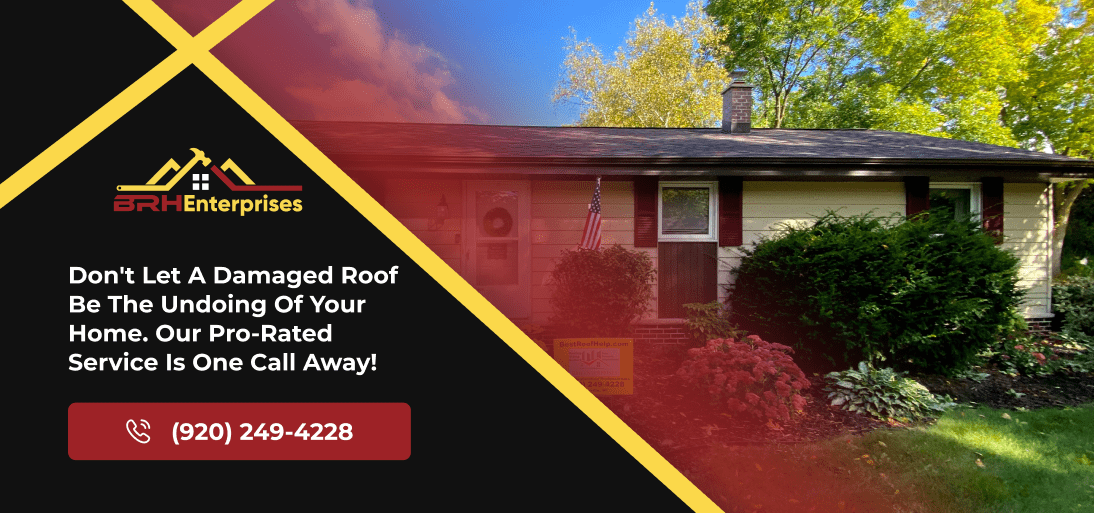Why Tapered Roof Insulation Is A Game-Changer For Your Building
Estimated Reading Time : 6 Min.

For building owners and contractors, the roof is a crucial aspect of any structure. It protects against the elements and helps control interior temperature and energy usage. Among the various components, insulation plays a key role, mainly tapered roof insulation.
This type of insulation is a noteworthy innovation in sustainable architecture, offering many benefits. In this blog post, we will explore tapered roof insulation and how it’s changing modern construction.
What Is Tapered Roof Insulation?
For a long time, traditional flat roof insulation methods have been the standard choice. However, tapered roof insulation streamlines the process of achieving both thermal efficiency and proper drainage within a flat roofing structure. Unlike traditional methods requiring sloping decks, tapered insulation creates the necessary slope for the roof’s waterproofing layer in one step.
This insulation is commonly installed on the surface of the flat roofs before the membrane, using materials such as polyisocyanurate, expanded polystyrene, or extruded polystyrene. Its advantages include faster installation, cost-effectiveness compared to traditional methods, and lighter weight, suitable for various projects, whether it’s a new construction or refurbishment.
Overall, tapered roof insulation panels offer an efficient and adaptable solution, seamlessly combining insulation and drainage requirements for flat roofing projects, outperforming traditional methods.
Also Read: All You Need To Know About Roof Insulation And The Top Products In 5 Minutes
Types of Tapered Roof Insulation
When looking into tapered insulation for your roof, it’s essential to explore the different materials available. Tapered roof insulation panels come in a variety of materials. The choice typically hinges on factors such as climate, budget, and unique building requirements.

1. Expanded Polystyrene (EPS)
Expanded Polystyrene (EPS) is a popular material used for tapered roof insulation. It’s lightweight yet strong and consistently works to keep heat within your building. EPS is often used on roofs with a single material layer and helps with both insulation and draining water effectively, which is important to prevent damage to the building and roof. Effective drainage is essential for flat roofs to last longer and perform well.
Benefits
- Offers consistent thermal resistance
- Key strength: rigidity and dimensional stability
- Ideal for single-ply roof applications
- Effective for thermal performance and water drainage
- Prevents water from ponding and damaging the building
2. Extruded Polystyrene (XPS)
Extruded Polystyrene (XPS) is another type of tapered roof insulation known for its great resistance to moisture. If water soaking through to the insulation is a worry for you, XPS is a good choice. XPS insulation boards not only provide insulation, but they also help with drainage, preventing leaks and damage to the roof. They can also help you save money on energy bills by keeping indoor temperatures at a steady rate.
Benefits
- Ideal for preventing water absorption
- Combines drainage and insulation in one system
- Suitable for flat roof construction
- Prevents leaks, damage, and premature deterioration
3. Polyisocyanurate (Polyiso)
Polyisocyanurate (Polyiso) is often picked for tapered roof insulation because it’s great at keeping the heat in due to its high R-value compared to other options. It’s light and easy to handle, making it perfect for flat roofs. Using Polyiso can also help prevent water damage and condensation issues, reducing maintenance needs for walls and floors.
Benefits
- Also perfect for flat roofs
- Enhances energy efficiency and reduces maintenance
- Suitable for refurbishment and new build projects
- Offers practical solution to water ponding with combined drainage and insulation
Comparison Of EPS vs. XPS vs. Polyiso Tapered Insulation
When comparing these three common types of tapered insulation you’ll find different traits that make one more preferable than another depending on specific circumstances.
| Type | Expanded Polystyrene (EPS) | Extruded Polystyrene (XPS) | Polyisocyanurate (Polyiso) |
| Strengths | Lightweight, sturdy | Excellent moisture resistance | High R-value per inch |
| Thermal Resistance | Consistent R-value over lifespan | Retains R-value even after exposure to water | Highly efficient, especially in warmer climates |
| Compatibility | Versatile, compatible with various roofing systems | Ideal for high water resistance | Suitable for modified bitumen, built-up, or single-ply roofing systems |
| Water Resistance | Less resistant to water vapor than XPS | Prevents water penetration, especially for concrete | Can be tapered or flat to direct water toward a drain |
| Compressive Strength | Higher density EPS typically has higher compressive strength | Highest compressive strength, suitable for challenging environments | Slightly less strength than XPS but still moderately good |
Although personal preferences play some part in this selection process, considering these factors will ensure you select an option compatible with your building’s unique requirements, leading to a more effective and durable roofing system.
Benefits of Tapered Roof Insulation
Undoubtedly, one of the key decisions you make when planning a construction project is your choice of insulation, and tapered variants bring several noteworthy benefits to the table. These advantages are as follows:
- Effective Water Drainage: Tapered insulation helps water flow off the roof smoothly, stopping it from pooling and causing damage to the building’s structure or becoming a safety risk.
- Cost-Effectiveness: It can be cheaper and quicker to install tapered insulation compared to creating slopes on the roof’s structure itself. This saves money on construction costs.
- Suitable for Complex Roofs: Tapered insulation works well on roofs with tricky shapes or areas where rainwater needs to drain in specific directions, providing flexibility in design.
- Great for Roof Renovations: If you’re updating an existing roof, tapered insulation is lightweight and can greatly improve drainage. This helps protect the new roofing materials and prevents moisture buildup.
- Energy Savings: By keeping temperatures consistent and reducing noise, tapered roof insulation can lower energy bills and make buildings more comfortable.
- Enhanced Roof Performance and Durability: Tapered roof insulation significantly boosts structural strength by distributing loads evenly, ensuring long-lasting durability. Its sloped design naturally resists weather damage, preventing snow or water buildup to extend the roof’s lifespan.
- Prevention of Ponding Water and Structural Damage: Tapered roof insulation is adept at preventing ponding water, mitigating structural damage, and moisture-related issues by facilitating proper drainage and eliminating water pooling on the roof’s surface.
The Impact Of Tapered Roof Insulation On Carbon Footprint And LEED Certification
Using tapered roof insulation can help reduce how much carbon dioxide buildings put into the air. When buildings use less energy for heating and cooling, they produce fewer CO2 emissions. This is good for the environment.
Buildings with tapered roof insulation can also earn a special certification called LEED. This certification looks at things like how much energy a building saves, how efficiently it uses water, and how clean the air inside is. Tapered roof insulation can help buildings earn points towards getting a higher LEED rating.
How To Install Tapered Roof Insulation
Installing tapered roof insulation is a process that requires careful steps to ensure optimal functionality. The installation process we’ll cover involves affixing the insulation panels directly onto the existing roof, though other methods may be applied depending on your specific situation. Remember, hiring a professional is always the best option for installing parts of your roofing system like insulation.
A Brief Step-By-Step Guide On Installing Tapered Roof Insulation Panels
- Preparing The Surface: First and foremost, clean your existing rooftop to remove any debris or materials that might interfere with the adhesion process.
- Measurement And Layout: Next, measure and outline where you will place each panel. It’s crucial to take precise measurements for an efficient layout.
- Application Of Adhesive: Apply roofing adhesive evenly over the area where you will install the first insulation panel.
- Placement of Panels: Carefully align your measured and cut insulation panels into their respective places. Press down firmly on each one to help it bond with the adhesive.
- Interlocking Panel Placement: Position subsequent panels in an interlocking pattern to create a consistent gradient across your roofing surface.
Future Trends in Tapered Roof Insulation
The construction and insulation industries are evolving rapidly, particularly in the realm of tapered roof insulation. Several key trends are shaping its future:
Innovations In Technology: Smart tapered roof insulation with integrated sensors is revolutionizing monitoring and maintenance. Advanced production methods, such as thermoforming, are also enhancing sustainability and efficiency.
Predictions for the Future:
- Energy Efficiency Regulations: Expect stricter mandates for highly efficient insulation in new structures, making highly-insulated roofs the standard.
- Democratization of Green Practices: Sustainable construction will become more widespread, with tapered foam insulation playing a key role due to its eco-friendly attributes.
- Digital Advancements: AI and data analytics will optimize insulation processes, improving efficiency from installation to end-of-life stages.
Conclusion
In summary, utilizing tapered roof insulation on your commercial roof provides lots of benefits like better performance, energy saving, and enhanced eco-friendliness. With tapered insulation, we solve the problems of designing and keeping flat roofs in good shape.
If you’re looking for commercial roof installation, BRH Enterprises is leading the way to smarter, more efficient buildings that are also good for the environment. For the best roofing services with expertise and proper guidance get in touch with us to give your commercial property the efficient drainage and insulation system it needs. Give us a call at (920) 249-4228 to learn more.


